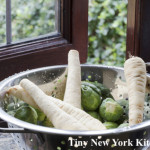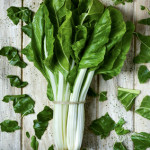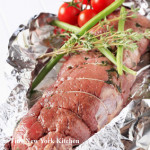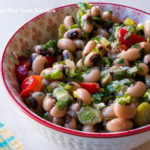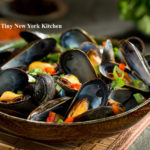Going out for dinner on Valentine’s Day is a risky affair. Even the best restaurants can have “overload difficulties” on such a busy night where couples have expectations of restaurant perfection. A better way to manage expectations is to take control of them yourself. Food is a language of love. You know what you like and what your loved one likes. No need to worry about cheesy love songs or a perfumed soaked lady sitting next to you. Nothing says I love you more than taking the time to make a special meal for the person you love. Visit the local farmers’ market, butcher, or seafood shop to buy their favorite seasonal ingredients. Come up with a meal that celebrates love. Turn off the lights, fire up all the candles and put on your favorite music.
Keep it easy and made make it special. Plan out the meal from beginning to end to get organized and make sure you have a solid menu. If you’re not a seasoned cook make sure to keep it simple and I recommend not trying to make complicated dishes that you’ve never made before. Make it easy with three courses. Begin with a beautiful cheese plate. Embrace easy, big impact dishes. Start off with prosciutto-wrapped scallops finished with a squeeze of lemon. Warm things up with braised short ribs or steaks finished off with butter and herbs. Keep desserts simple, but sweet. Decorate bakery cakes with fresh fruit or edible flowers or warm up slices of pie and top with caramel sauce and a gourmet ice cream or try your hand at an easy dessert of chocolate pots de crème. Don’t forget that nice bottle of wine or champagne.
“Work With What You Got!”
©Tiny New York Kitchen © 2018 All Rights Reserved
The colder months are when a rainbow of fruits and vegetables reach their peak, from dark green kale to sunny citrus.
Jicama
Pronounced hee-cah-ma, this winter vegetable is crunchy and refreshing. Its mild flavor makes it perfect for salads, salsa, or as crudités for your favorite dip. Use a vegetable peeler to remove its tough skin. When chopping, pick the ones with taut skin and firm flesh.
Turnips
This phytonutrient-rich root vegetable becomes sweeter as you cook it, shedding any bitterness along the way. The greens are particularly good for you and make an easy side sautéed with some garlic in olive oil.
Beets
Putt off by the long cooking time for beets? Reach for conveniently precooked packages in the produce section, or enjoy them raw. Peel them and grate them into salads or smoothies.
Parsnips
Earthy, sweet parsnips are loaded with fiber and minerals like folate and potassium. Older parsnips can have a somewhat fibrous core, which you can cut out before cooking if you prefer a softer texture.
Red Cabbage
High In antioxidants, red cabbage is great for slaws, but unlock a whole new world of flavor by sautéing, roasting or even grilling it.
Citrus
This category of fruit is at its peak right now, so take full advantage. The beauty of citrus is that it can swing from sweet to savory. These fruits stay fresh for weeks in the fridge, so keep a variety on hand to brighten up breakfasts, lunches, and dinners. Lemons, limes, and grapefruit are easy-to-find mainstays, but don’t be afraid to experiment with blood oranges, key limes, Meyer lemons, kumquats, pomelos, and clementines.
Brussels Sprouts
Full of fiber and vitamins K and C, this once-maligned cruciferous vegetable (from the same family as cauliflower and cabbage) is way more versatile than you think. Try it raw, roasted, fried, steamed, or sautéed.
Kale
This leafy green has gone from tossed-aside garnish to hot trend to salad staple. Whether you choose the curly or lacinato type, kale is high in vitamins K, C, and A, as well as carotenoids like lutein to promote eye health.
“Work With What You Got!”
©Tiny New York Kitchen © 2018 All Rights Reserved
This Snowy Saturday Morning I’m Making Old-Fashioned Baked Donuts. YUM!
“Work With What You Got!”
©Tiny New York Kitchen © 2018 All Rights Reserved
I can’t think of a better way to warm up than by a roaring fire in the evenings!
“Work With What You Got!”
©Tiny New York Kitchen © 2018 All Rights Reserved
Tiny New York Kitchen Wishes You & Your Family A New Year Filled With Prosperity, Joy, And Contentment. Wishing You A New Year Rich With The Blessings Of Love, Joy, Warmth, And Laughter. Wishing You Good Health, Happiness, And Success In The Coming Year And Always. Wishing You A Very Happy 2018!
“Work With What You Got!”
©Tiny New York Kitchen © 2018 All Rights Reserved
Tiny New York Kitchen Wishes You & Your Family A Very Merry Christmas
Standing Beef Rib Roast
How Much To Buy: A 54 to 5 Pound Roast Serves 8 to 10
Keep meat at room temperature for an hour or so. Preheat oven to 450 degrees. Rub roast with lots of olive oil, cracked peppercorns, minced garlic, kosher salt, and 2 tablespoons of an herb or spice rub, if desired. Place roast meat-side down in a roasting pan and cook 30 minutes. Reduce heat to 425 degrees. Continue roasting for about 3 minutes per pound. Turn oven back up to 450 degrees and roast another 15 minutes, or until meat thermometer reaches 125 degrees for rare, 140 degrees for medium-rare or 160 degrees for well-done. Remove from oven and let rest 15 minutes. Skin fat from juices, and pour some dry red wine into the pan with the drippings. Over a low heat, stir wine, scraping up any browned bits on bottom of pan. Serve over roast as a sauce.
Roasted Beef Tenderloin
How Much To Buy: A 4 to 5 Pound Tenderloin Serves 8
Position oven rack in center. Preheat oven to 425 degrees. Lightly oil a roasting pan. Mix 2 tablespoons olive oil, 1 tablespoon minced garlic, 2 teaspoons each of rosemary and thyme, and kosher salt and freshly ground pepper to taste. Rub over entire surface of meat. Place meat into roasting pan and cook until thermometer inserted into thickest part of the roast reads 125 degrees for rare, 140 degrees for medium-rare or 160 degrees for well-done. This should take 35 to 55 minutes. You may baste with pan juices halfway through cooking, if desired. Remove from oven. Let rest 15 minutes and serve.
“Work With What You Got!”
© Victoria Hart Glavin Tiny New York Kitchen © 2017 All Rights Reserved
Although religiously themed prints made by wood carvers date back to the Middle Ages, the Christmas card is a relatively recent tradition. The widespread exchange of homemade Christmas cards began in Britain in 1840, with the introduction of the first postal service, the Penny Post. The man who played a key role in setting up the Penny Post, Sir Henry Cole, commissioned London artist John Calcott Horsley to produce the first commercially printed Christmas card in 1843. One thousand copies of the card, which depicted a family party and scenes of the poor being clothed and fed, with the inscription “A merry Christmas and a happy New Year to you,” were placed on sale. The tradition took off over the next few years as printing methods improved and, by 1860, large numbers were being produced and mailed in Europe. In 1875, lithographer Louis Prang became the first printer to produce Christmas cards in the United States. Today approximately 2.2 billion Christmas cards are mailed each year.
“Work With What You Got!”
© Victoria Hart Glavin Tiny New York Kitchen © 2017 All Rights Reserved
The origins of the Yule log can be traced back to the Norsemen of northern Europe. Jol or Jule (pronounced “Yule”) was a festival celebrated on the Winter Solstice in honor of Joinir, also known as Odin, the god of ecstasy and death. Feasting and drinking would take place around bonfires, and fires would be lit in hearths.
This tradition spread to other parts of Europe, where tree worship was already part of pagan rituals. Households would venture into the woods on Christmas Eve and cut a log from an oak tree, which was then transported home, with much singing and merrymaking along the way. The log would be put on the fire, which would be kept burning for twelve days. This was believed to bring health and productivity to the family and their crops for the coming year and protect them from witchcraft and demons. When the fire was finally extinguished, a small piece of wood would be kept and used to light the next year’s log. Often the ashes would be scattered over the fields to ensure fertility.
Later on, the yule log was used as a decorative centerpiece for the Christmas table, and as stoves replaced giant household hearths, the pastry or chocolate logs we are familiar with today came into being.
“Work With What You Got!”
© Victoria Hart Glavin Tiny New York Kitchen © 2017 All Rights Reserved


